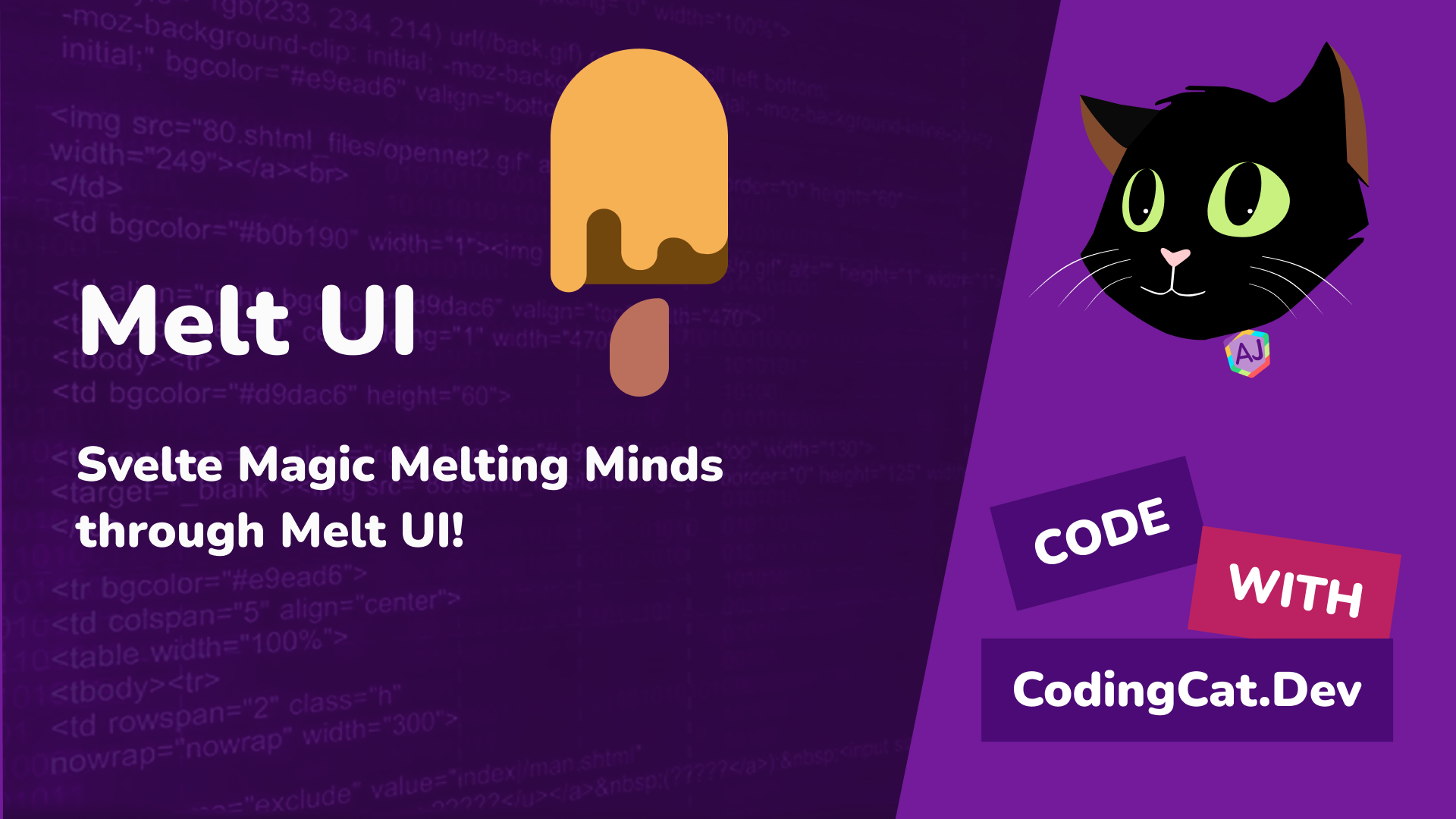
Open Source Svelte Magic: Melting Minds through Melt UI!
Thomas teaches Brittney and Alex how to use Melt and how Runes can be used to improve builders.
Original: codingcat.dev/podcast/cwcc-1-2-meltui
Melt UI is an open-source collection of component builders designed for creating user interfaces with the Svelte framework. It stands out for its accessibility and customization features, enabling developers to build user interfaces that are both accessible and uniquely styled. Here are some key aspects of Melt UI:
Builder API: Unlike traditional component libraries, Melt UI offers builders instead of components. These builders are functions that generate a collection of properties that can be assigned to any element or component, providing great flexibility.
Accessibility: Accessibility is a primary focus of Melt UI. It follows WAI-ARIA design patterns, ensuring that UI components are inclusive and user-friendly. This includes attention to aria attributes, role management, focus handling, and keyboard navigation.
Style Customization: Melt UI comes without predefined styles, allowing developers to apply their own styling to integrate seamlessly with their application's design system. This makes it compatible with various styling approaches like vanilla CSS, CSS preprocessors, or CSS-in-JS libraries.
Open and Extensible: The architecture of Melt UI is open and flexible, allowing for customization and extension of components. This supports adding event listeners and props to tailor components to specific needs.
Simplified Development Experience (DX): Melt UI aims to simplify the development workflow. Its components are uncontrolled by default, relieving developers from managing local states. However, there's also support for controlled components for those who prefer it.
TypeScript and SvelteKit Support: Melt UI provides a fully typed API, promoting a consistent and familiar experience across components. It is also built with server-side rendering (SSR) in mind, making it suitable for SvelteKit.
Community-Driven: Being an open-source project, Melt UI is developed and maintained by a community of contributors.
Melt UI is still in its early stages, so developers might expect breaking changes in minor releases until a stable version is released.
For more detailed information and examples, you can visit the Melt UI website and its GitHub repository.
